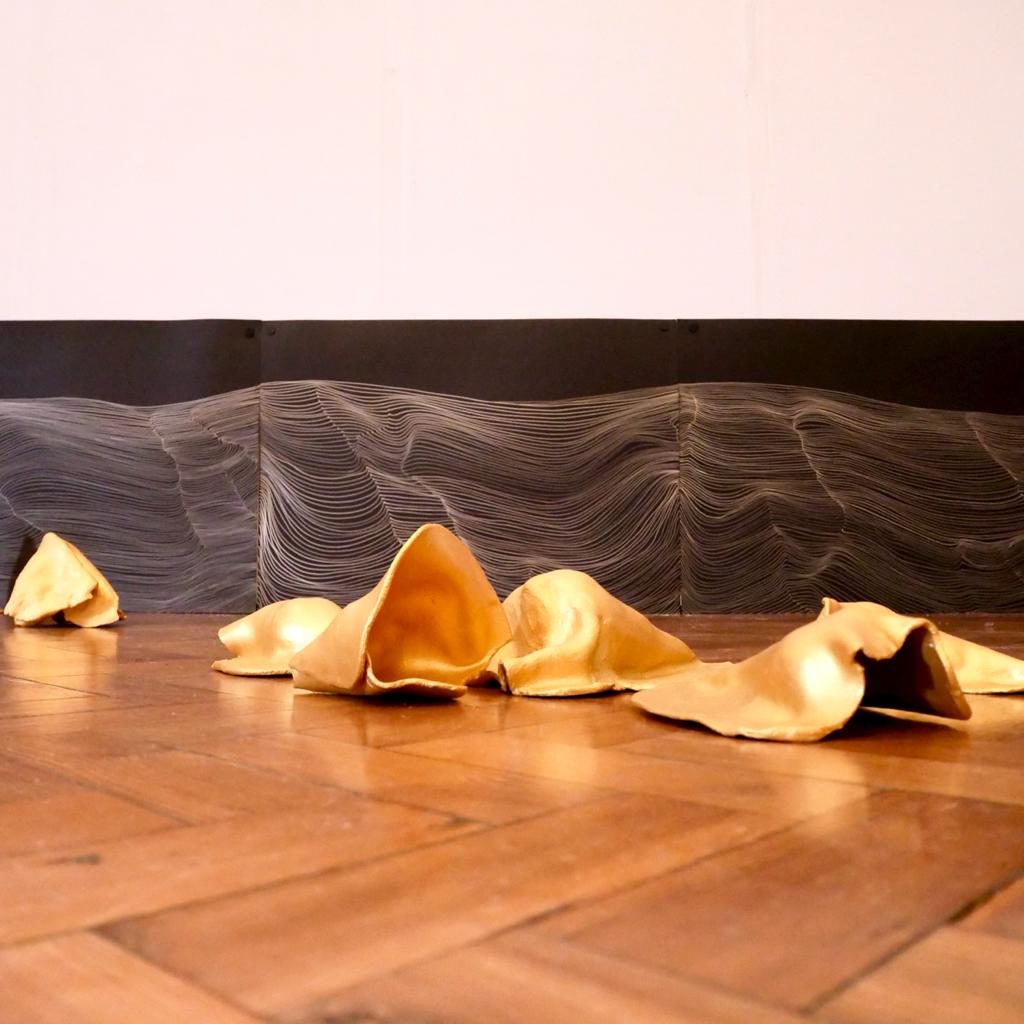Award 2021
Welcome to the Social Art Award 2021 – Online Gallery!
We are grateful for the many inspiring contributions from artists around the world. The selected works reflect a broad spectrum of contemporary social art practices and explore new relationships between humans, nature, and technology. They address themes such as ecological regeneration, climate justice, sustainable futures, social resilience, and more-than-human perspectives.
Below you will find the submissions from the Social Art Award 2021 – New Greening edition that passed the initial jury round. The Online Gallery offers public visibility to these works and encourages dialogue around their ideas and approaches; it does not replace the final jury decision.
Thank you to all artists for sharing your visionary and committed work. We invite you to explore the gallery and engage with the perspectives shaping New Greening.
Just a spoonful
Sarah Strachan
This ground-level installation consists of large scale cumulative line drawings, gilded ceramics, earth, the sound of soil and a compost bucket. The drawings are created through the repetitious addition of a continuous ink line, layer by layer it evokes the slow process of soil accumulation. The ghostly casts allude to the imprint left on the land by industrial agriculture - just one teaspoon of soil contains more living organisms than there are people on the planet. The complex interconnections between these organisms are vital to soil health but are broken down by intensive farming methods - managed arable land is quieter and exhibits fewer different noises than organically managed land. Over the past 40 years Earth has lost a third of arable land and soil is currently being destroyed 10-times faster than it’s being created. The global pandemic has re-focused our attention on the importance of food security, but without soil we wouldn’t have food to eat or fresh water to drink. This work responds to a specific-site in East Anglia, in the UK, and is motivated by a deep sadness for the impact of sugar beet harvesting on the soil. Research has involved deep mapping and deep listening methodologies and led to interdisciplinary discussions between people, the land and its materials revealing new perspectives and understandings of a complex agricultural-environmental system. While we continue to explore these developments, I am also planning local action in the context of the organisations engaged in the project. Everyone can contribute to the regeneration of our soils by composting all our organic waste, so I’m looking to install art and composting initiatives within the organisations engaged in this project. The aim is to draw attention to the value of soils but also provide tangible ways for individuals to get involved and make a difference by going circular.
This ground-level installation consists of large scale cumulative line drawings, gilded ceramics, earth, the sound of soil and a compost bucket. The drawings are created through the repetitious addition of a continuous ink line, layer by layer it evokes the slow process of soil accumulation. The ghostly casts allude to the imprint left on the land by industrial agriculture - just one teaspoon of soil contains more living organisms than there are people on the planet. The complex interconnections between these organisms are vital to soil health but are broken down by intensive farming methods - managed arable land is quieter and exhibits fewer different noises than organically managed land. Over the past 40 years Earth has lost a third of arable land and soil is currently being destroyed 10-times faster than it’s being created. The global pandemic has re-focused our attention on the importance of food security, but without soil we wouldn’t have food to eat or fresh water to drink. This work responds to a specific-site in East Anglia, in the UK, and is motivated by a deep sadness for the impact of sugar beet harvesting on the soil. Research has involved deep mapping and deep listening methodologies and led to interdisciplinary discussions between people, the land and its materials revealing new perspectives and understandings of a complex agricultural-environmental system. While we continue to explore these developments, I am also planning local action in the context of the organisations engaged in the project. Everyone can contribute to the regeneration of our soils by composting all our organic waste, so I’m looking to install art and composting initiatives within the organisations engaged in this project. The aim is to draw attention to the value of soils but also provide tangible ways for individuals to get involved and make a difference by going circular.



